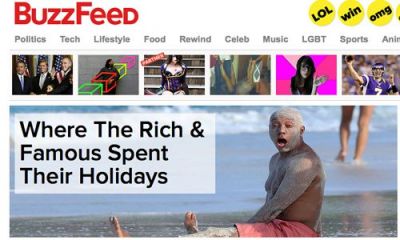What’s Behind Buzzfeed Success? Ego

Buzzfeed is a genius tech giant! This multi-million business is claiming insane 100-something million unique monthly visitors.
The rest of us look at Buzzfeed success and wonder how we can replicate the same. How does Buzzfeed do it?
I’ve stumbled upon this Psychology of Sharing infographic, that I found impractical. It unnecessarily puts people into 6 types of online sharers:
Altruists – Helpful, Dependable, Considerate and shares content via Facebook and email
Careerists – Educated, Professional, Interested in Career Advancement, Intelligent and most likely to share content on LinkedIn
Hipsters – Creative, Young, Popular, Care about their identity, shares content via Facebook and Twitter but least likely to use email for sharing
Boomerangs – Likes to provoke a reaction, Seeks Validation from others, Shares Often and uses all channels to share content as long as people engage
Connectors – Relaxed, Thoughtful, Planners and uses both email and Facebook to share content to stay connected with others
Selectives – Resourceful, Vigilant, Thoughtful and shares content to inform others via email with personalised content
Even though it makes a nice colourful infographic, I wouldn’t bother with it as a marketer.
And here’s why …
Fundamentally, we are all quite average: although we hate to admit it, most people are just like most people, which is why we tend to like most of the things everybody else likes.
Yes, there are definitely some Careerists on our LinkedIn feeds, but I’m sure many of them are Boomerangs and Hipsters on their Facebook feeds.
Do Altruists actually exist? Even if we share a charity petition with our friends or any other useful for someone else information, the bottom line is – we share it because it makes us feel good and look helpful for other people. We want people to see how considerate and good we are.
So, it all boils down to Me, Myself and I.
BuzzFeed’s guide to shareability:
People like to share things… That say something about themselves: “I am a person who knows about typography.” That are highly visual: “100 Beautiful Examples Of Tilt-Shift Photography”.
It’s quite simple, really! And Buzzfeed gets it.
Narcissism is what marketers should attempt to appeal to in order to gain traction with creative campaigns. And that applies to all sharer types.
Yes, people are all unique, impulsive creatures, but they all have one thing in common – deep desire to be liked and accepted.
If you want your content to be seen by thousands of people (which as a marketer you probably do), create content that makes your target audience look good in other people’s eyes. It can be anything from boosting their confidence, validating their quirky identities, making them look smart/helpful or making them feel part of a wider cool/unique/popular group.
What makes ego-boosting content so appealing?
Very important thing to note here is that our ego is dependant on people’s perception of us. In order to feel good, we need to feel validated (number of likes/shares by our friends satisfy this need in us online).
The crux of it lies within the perception of how much others will enjoy this content I’m sharing.
Content can’t only be interesting to ourselves, but it must also provide value to others.
With all this self-love, what is about all these cat videos Buzzfeed seem to love? If people care about their own identities, why do these cat videos work so well on the web?
Because cats tell human stories
Cats get themselves into all kinds of amusing predicaments, they sit like us, they make weird human noices, they rescue us from dogs etc.
We, humans, own cats
That’s a lot of content – photos, videos.
We want to be like cats
Cats seem totally comfortable being exactly what they are, and they are totally alive to the moment, which is something we, as humans, have lost sight of, though we are trying to get back to that.
Why do you think so many people meditate and practice yoga? We are seeking to be more cat-like, and perhaps our embracing of cats is simply the embracing of what we know to be essential in ourselves.
Cats resemble us
Well, at least more than pandas or turtles.
(We love ourself too much to concentrate on something that doesnt look like us.)
Social has enabled the ability to do substantive stuff that ties in with people’s identity.
So, marketers, take advantage of everybody’s favourite subject: Ourselves.
(Spread the knowledge, share this article with your friends!)

